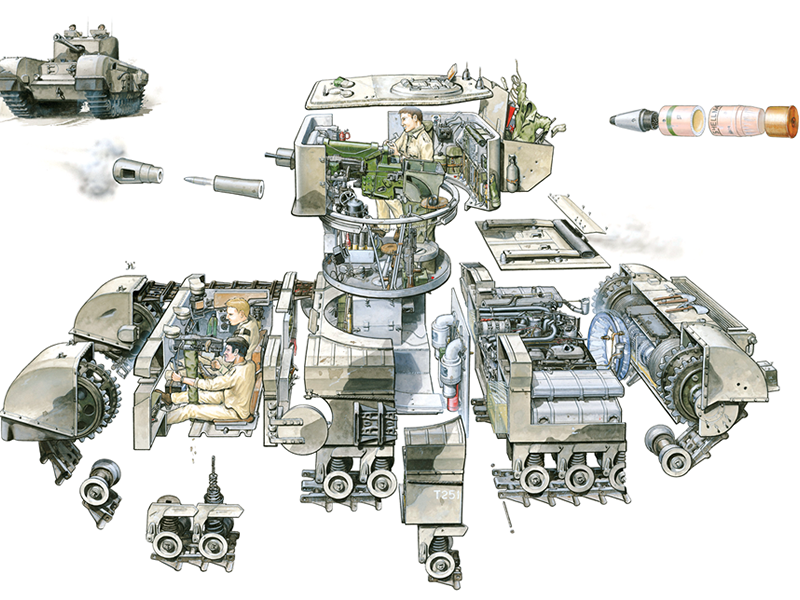See inside a Churchill Mk VII tank

[fototag id=”churchilltank”]
Designed in the aftermath of the evacuation of Dunkirk by the British Expeditionary Force, the Churchill tank was Britain’s attempt to readdress the technology gap between their ageing Matilda II battalion and the German Panzer tanks that had them out- gunned.
The result was the Mark I, a heavily armoured battle tank equipped with a two- pounder main gun, three-inch howitzer in the rear and the most advanced and robust suspension system yet conceived. It was a defensive juggernaut, designed with one goal: to dominate the European theatre of war.
From its introduction in June 1941, the tank proved a reliable and versatile weapon platform capable of engaging targets quickly and efficiently. Key to this was its high speed of 26km/h (16mph) and excellent turning ability, characteristics made possible by its multiple-bogie suspension system. The suspension was fitted to the hull under two large pannier enclosures on either side, with the tracks running over the top.
Initially, the Churchill was fitted with a two- pounder main gun and three-inch howitzer (artillery piece); however, the former was soon upgraded to a six-pounder cannon and the latter replaced with a high-calibre machine gun.
These cannons gave the Churchill decent stopping power against medium armour, yet still left them short in firepower when compared with their German contemporaries. The Churchill’s main cannon continued to be improved throughout its lifespan, with 75mm guns fitted to Mk IIIs.
Despite its average firepower, however, the Churchill’s high manoeuvrability and excellent armour made it one of the foremost tanks of WWII, being extensively deployed in Europe and North Africa.




